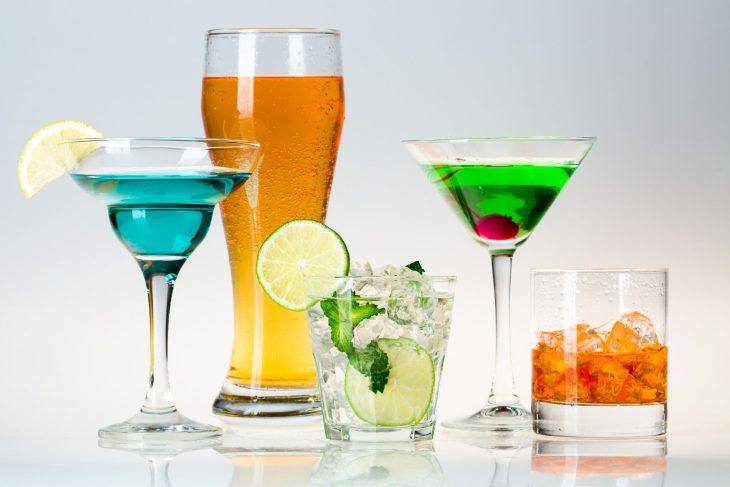Hey there! This site is reader-supported and we earn commissions if you purchase products from retailers after clicking on a link from our site.
Ever wonder if there were ingredients in your kitchen right now that could be transformed into alcohol? The answer is yes. Making alcohol is relatively simple. The challenging part is choosing what kind of alcohol to make because the process changes everything.
But if you want the easiest alcohol to make with minimal prep and ingredients, go for mead. The steps to get the perfect batch of mead are more straightforward than other types, even if it may take a bit longer. If you want alcohol fast, choose beer. Wine and spirits—think cordials and whiskeys—have a lengthier fermentation process than beer.
So, that’s the first step: Choose which kind of alcohol you want to make. Beer? Wine? Spirit? Then, you go from there.

Wondering what the difference between Mead and Ale is? Check out my article explaining the differences between Ale and Mead.
Table of Contents
- The Easiest Alcohol To Make
- Tips For Brewing Your Beer
- Making Homemade Wine and Beyond
- What Other Alcoholic Drinks Can I Make?
- Can I Try Using a Base Liquor?
- Making Your Own Homemade Alcohol Is Easy!
The Easiest Alcohol To Make
In most cases, drinkable alcohol requires just a couple of things: sugar, baking yeast, water, and an airtight vessel. Those sugars are consumed by the yeast as it multiplies and is converted into alcohol and carbon dioxide. Soon, the alcohol destroys the yeast, and that results in the fermentation process.
Now, how do you make different kinds of alcohol? Change the sugar source. Honey, fruits, flowers (like dandelion), and starches (like potatoes) all change the nature of alcohol that is produced.
Most people will agree that mead is the easiest alcohol to make because it requires very little equipment and ingredients. If you don’t have the items already in your pantry, you can easily procure them from the grocery store.
To make mead, you need about 2-3 pounds of honey for 1 gallon/3.78 liter of water. Stir the mixture then add yeast. Cap the container. Wait a few weeks. Afterward, your mead will be drinkable.
The above recipe is for the most traditional form of mead. Since there are many kinds of mead to try, you should do some research. There are over 40 types of mead, and not all of them use honey. Perhaps you prefer maple syrup or unripe grapes or some carbonation.
Boozy Lemonade
The sweetness of honey may not be your thing. There is a Finnish version of mead called sima, which is basically fermented lemonade. The longer it ferments, the boozier it gets!
Ingredients include:
- A gallon of water
- 2 large lemons
- ½ cup white sugar
- ½ cup brown sugar
- ¼ teaspoon baker’s yeast
- Raisins
Making Finnish sima is easy. Here’s how:
- After gathering your ingredients, bring the water to a boil.
- Use a lemon zester or peeler to take some of the yellow rinds from the lemons. Place that in a container.
- Peel or trim any bitter white rind from the lemons. Discard that rinds.
- Slice the peeled lemons and place them in the container with the zest. Add brown and white sugar.
- Once the water is boiling, pour in the container of sliced lemon and sugar. Kick back the heat and let the water cool. Wait until it is lukewarm before adding the yeast.
- Cover the pot and let it sit at room temperature for at least 24 hours or until the surface of the liquid begins to bubble.
- Strain the liquid into clean bottles. Remove any solids.
- Add 5 raisins and a single teaspoon of sugar to every bottle.
- Seal the bottles tight and put them in a cool place (or refrigerate) for about 2-5 days. Wait until the rains float to the top of the bottle. That is when you know the Finnish sima is ready for drinking. At this point, it won’t be incredibly intoxicating, either.
- Serve it cool and keep refrigerated to keep the drink fresh.
Tips For Brewing Your Beer
Let’s say mead isn’t your thing. Why not brew up some beer? The process is relatively the same: prepare your mix, blend it, ferment, and bottle. There are ways to personalize your batch of beer by either adapting the steps to your preferences and changing up some of the ingredients.
Grab up a home-brewing kit. It should contain basic supplies like a bottling bucket, spigot, fermenter, hydrometer, and so on.
Here are three things to keep in mind when brewing your beer:
1. Find a Balance Between Special and Basic
As you already know, beer is a mixture of special grains and malts. Adding various grains and malts will change the flavor of your beer.
Malt is also a grain, and it is the sugar source for your beer. Base malts include barley malt (Pilsner, mild ale, Munich, etc.), non-barley (wheat, rye), and so on. There are also kilned and toasted malts, like biscuit malt. Then, you can add some unmalted adjuncts, including flaked oats, maize, pumpkin, rice, and potatoes that are mashed to extract the sugars.
Play around with the ingredients to see which blend is best for you.
2. Adding Nuts, Berries, and Fruits to Your Beer
While this will add a step to the fermentation process—the second round of fermentation—you can play around with a mixture of fruits, berries, and nuts to change the flavor of your beer. Keep in mind that, if you add additional ingredients, the alcohol percentage will be higher.
3. Herbs and Spices
Another popular method of flavoring homemade beer includes herbs and spices. This can be anything ranging from cinnamon, pumpkin spice, peppermint, mint, peppers, chili, or even basil and thyme. A lot of seasonal brews use spices. For example, wintry blends often include minty notes, while autumnal beers often incorporate vanilla, cinnamon, and nutmeg.
Making Homemade Wine and Beyond
If you want to experiment with brewing alcohol at home before investing in a kit or expensive equipment, then some alcohol can be made using fruit juice. It requires very little effort.
You will need:
- 100% pure fruit juice, such as grape juice, apple juice, or blueberry juice
- 1 packet of yeast power
- 1 airlock
- 1 hydrometer (optional; you only need it if you want to measure the percentage of alcohol)
Then, follow these steps.
- Step 1: Figure out how much of the beverage you wish to make because that changes how much yeast you use. For instance, if you are making 1 gal of cider, you can use about ½ of a single yeast packet. Keep in mind that, if your container is a simple 1-gallon milk jug, you can only fill it up ¾ to allow room for carbonation and fizz.
- Step 2: Add the yeast to the juice of your choice. Give it a little stir.
- Step 3: Add the airlock to the container. Make sure it is secured since this is vital to the fermentation process.
- Step 4: Let your homebrew sit for about 45-72 hours. Wait until the mixture has stopped fizzing and foaming.
- Step 5: Pour the alcohol. It is recommended that you strain your alcohol into another clean container before drinking to keep out any fermentation residue. Doing so will also make your alcohol taste better.
Congratulations! You have just made alcohol out of juice. As with any alcoholic beverage, be sure to drink responsibly.
What Other Alcoholic Drinks Can I Make?
Perhaps you are feeling a bit adventurous and festive. Try hard apple cider. Get yourself some red wine yeast (a different yeast than baker’s yeast), 5 gallons of apple juice, and a few bags of dextrose. You will also need a 5-gallon carboy and either a carboy cap or an airlock stopper. A funnel will help with pouring the apple juice into the carboy.
No boiling is necessary. Simply pour ½ a gallon of apple juice into a carboy.
Next, open the dextrose and add a single bag into the half-empty gallon of apple juice. Shake that mixture.
After that, pour the apple juice and dextrose into the carboy. Repeat that for the other gallons of apple juice. Pour all into the carboy when finished.
Add the yeast. You can use any leftover apple juice to wash off any yeast that got stuck to the carboy’s walls.
Lastly, add the stopper or airlock cap.
The result is a dry apple wine, known as apfelwein, that is based on a German recipe. You can try different types of yeast to change the flavor of the hard cider. Optionally, you can change up the flavor by using apple cider in place of apple juice.

Can I Try Using a Base Liquor?
Of course! Homemade liqueurs are an excellent choice, especially since distilling your liquor is still prohibited in many places. To make a liqueur, you will need a base (rum, vodka, or brandy), sugar in the form of simple syrup, and some ingredients to add flavor. Note that this is not infusing.
Simply pour some base liquor into a container, add the sugar, and your flavorings—be it fruit, herbs, spices, or other adjuncts—and let it sit for a decent amount of time. Keep in mind that this may take a week or even months. Afterward, strain out any solids.
The possibilities for this are endless. For instance, you can make a coffee-flavored cordial, an amaretto, or even a berry fruit liqueur for cocktails.
Making Your Own Homemade Alcohol Is Easy!
So, there you have it: the easiest alcohol to make is mead, with beer and cider coming in at a close second. Play around with your ingredients and have fun. You are sure to stumble upon something mind-blowing in no time. The only question is, which alcohol are you going to try brewing up first?

